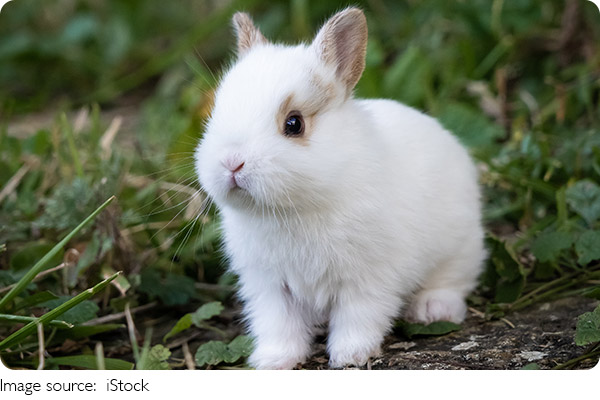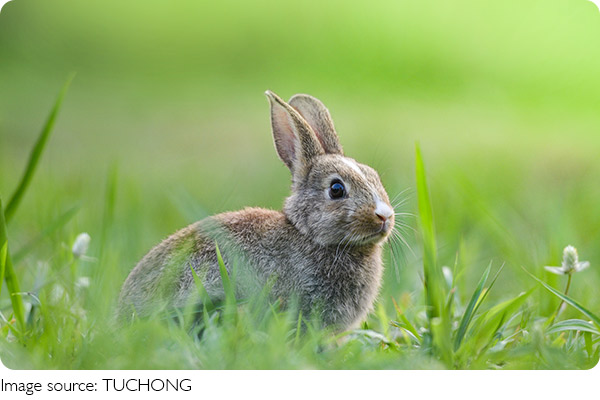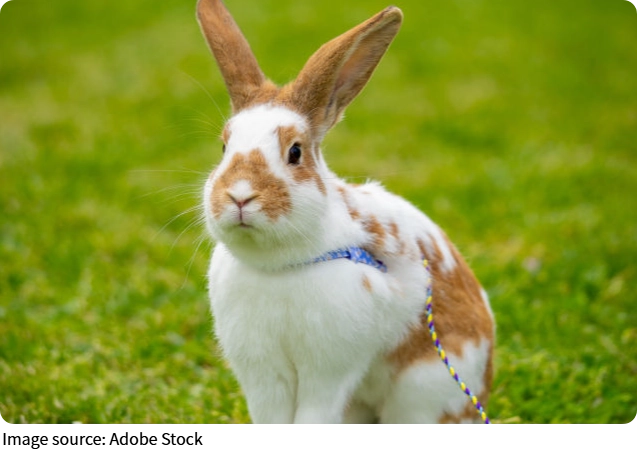Secret Life Of Rabbit!

Welcome, Lykkers! Rabbits might appear soft and simple at first glance, but beneath those twitching noses lies a world of remarkable instincts, social complexity, and survival strategies.
Whether wild or domestic, these creatures live with intelligence, awareness, and a deep connection to their environments. This article uncovers the lesser-known, fascinating aspects of rabbit life that set them apart from other mammals!
A Brain Built for Survival
Rabbits may not be predators, but their brains are exceptionally wired for evasion and awareness. With panoramic vision that spans nearly 360 degrees, rabbits can detect predators approaching from almost any angle—except directly in front of their nose and just behind their tail. This visual advantage is paired with incredibly sensitive hearing. Each ear can move independently, scanning for sounds and helping the rabbit triangulate the exact source of danger.
Neurologically, their brains are built for split-second reactions. A rabbit doesn’t ponder when to flee—it just runs. Their instinctive processing enables decisions in milliseconds, a survival trait honed over millennia of evolution.

Communication Without Words
Rabbit language isn't verbal, but it's impressively expressive. Through a combination of body posture, ear position, and subtle sounds, they convey a wide range of messages. For instance, a gentle tooth grind signals contentment, while a loud thump of the hind legs alerts others to danger.
A rabbit flattening its ears against its back might be showing aggression or fear, while a full-body flop onto the side can be a gesture of complete relaxation. Observing rabbit communication closely reveals an entire nonverbal vocabulary—one that’s consistent across breeds and even between wild and domestic species.
Territorial Architects
Digging isn’t just playtime for a rabbit. In the wild, rabbits are accomplished architects of underground burrow systems, known as warrens. These structures can contain multiple entrances, escape tunnels, and nesting chambers. Some warrens extend over 10 feet underground and house complex social groups.
Interestingly, even domesticated rabbits retain this drive. In home environments, they’ll often dig at carpets, corners, or soil—not out of misbehavior, but because of deeply embedded instincts related to territory and security.

Gastrointestinal Genius
Rabbits are hindgut fermenters, meaning their digestive systems are optimized to extract the maximum nutrients from plant-based diets. They practice something called caecotrophy—producing two types of feces: regular pellets and nutrient-rich cecotropes. Rabbits eat the cecotropes directly to reabsorb essential vitamins, amino acids, and fatty acids that weren’t absorbed during the first digestion cycle.
This process is crucial for their health. A rabbit deprived of this behavior due to stress or illness can quickly suffer from nutritional deficiencies, leading to major health issues.
Silent Social Order
Rabbits live in social hierarchies, especially in the wild. While they appear quiet, their society is highly structured. Dominance is established through grooming rituals, territorial displays, and even subtle acts like who gets to eat first.
A dominant rabbit may nudge a subordinate one to groom them—a gesture of status. In group settings, this structure reduces conflict, as every rabbit learns their place within the colony. Domestic rabbits often show similar behavior toward their owners, especially when they feel safe and bonded.
An Emotional Core
Contrary to outdated beliefs, rabbits experience complex emotional responses. They form deep attachments to bonded mates or human caretakers and can show signs of grief when separated. Some rabbits may even become depressed after the loss of a companion, exhibiting lethargy, loss of appetite, or withdrawal. Studies have revealed that rabbits can recognize individual human voices and even associate specific people with positive or negative experiences. This emotional depth makes them highly responsive to trust-based interaction.
Evolutionary Adaptations That Inspire
The rabbit’s biology is a blueprint of evolutionary success in prey animals. Their legs are muscular and built for explosive speed, allowing a zigzag running style that makes them difficult targets. Their whiskers can detect air currents and navigate tight spaces, and their fur offers seasonal camouflage—often changing shades from summer to winter in wild populations. Moreover, their reproductive strategy—short gestation periods and frequent breeding ensures species survival, especially in regions with high predation.

Not Just Cute—Rabbits Are Ecological Engineers
In ecosystems, rabbits play key roles as prey, soil turners, and seed dispersers. Their burrowing helps aerate the ground, and their grazing influences plant communities. In some regions, such as parts of Europe, rabbits are considered keystone species because their presence supports entire food webs.
However, in environments where they are non-native (such as Australia), rabbits can cause ecological imbalance—outcompeting native species and altering landscapes. This dual role shows how sensitive ecosystems are to the presence or absence of these animals.
Understanding rabbits means looking beyond the floppy ears and soft fur. These creatures have a secret life filled with intelligence, emotion, and ecological importance. Whether you're a rabbit owner, a wildlife observer, or simply curious, exploring the inner world of rabbits reveals just how extraordinary they truly are!
-
 Birds' Epic RoutesHow Do Birds Form Their Amazing Migration Paths? Discover the Science Behind Their Long Journeys!
Birds' Epic RoutesHow Do Birds Form Their Amazing Migration Paths? Discover the Science Behind Their Long Journeys! -
 Elephants Remember LoveUncovering the Emotional Lives of Elephants: Grief, Memory, and Deep Family Connections!
Elephants Remember LoveUncovering the Emotional Lives of Elephants: Grief, Memory, and Deep Family Connections! -
 Night Vision SecretsHow do nocturnal animals see so clearly in the dark? Uncover the secrets of night vision!
Night Vision SecretsHow do nocturnal animals see so clearly in the dark? Uncover the secrets of night vision!